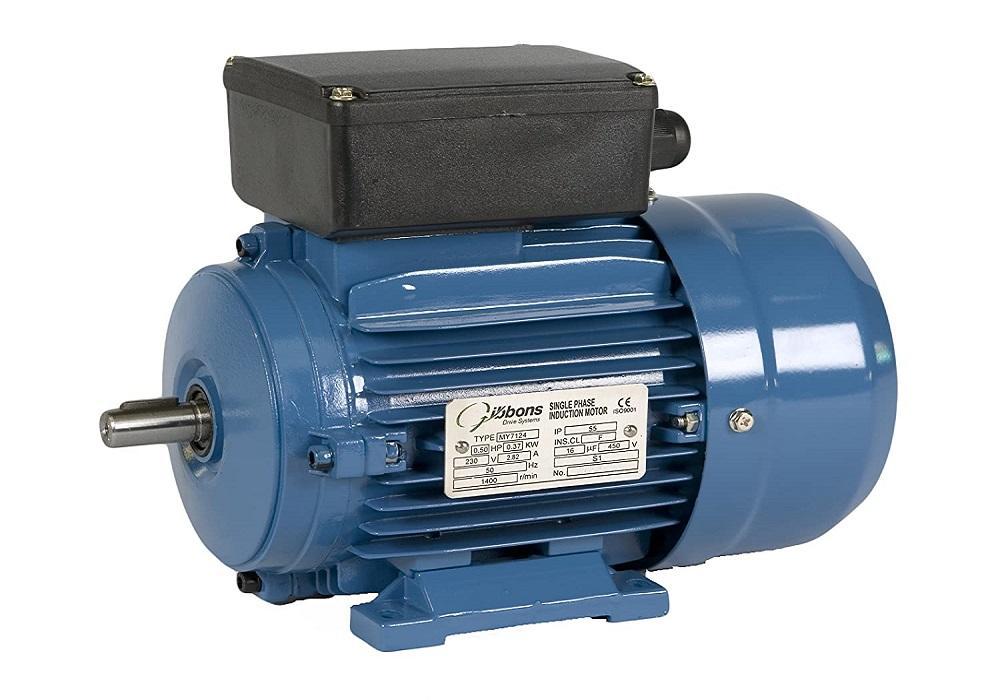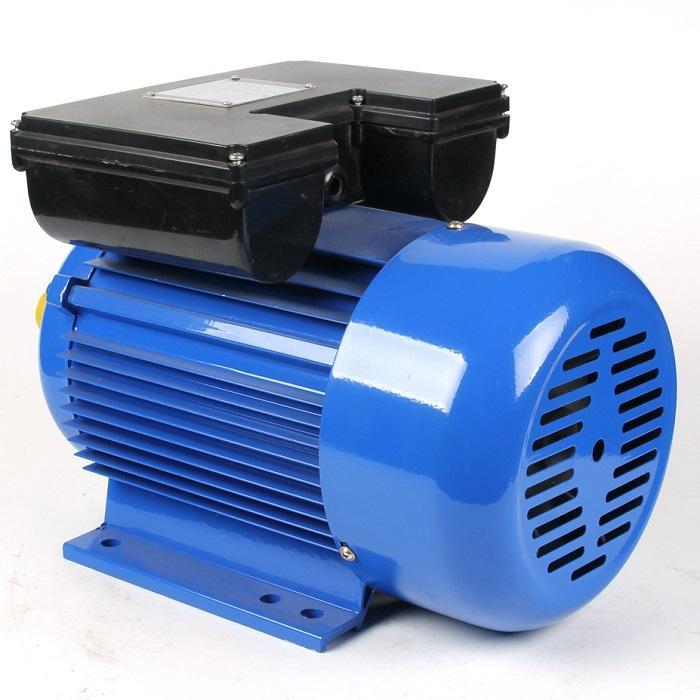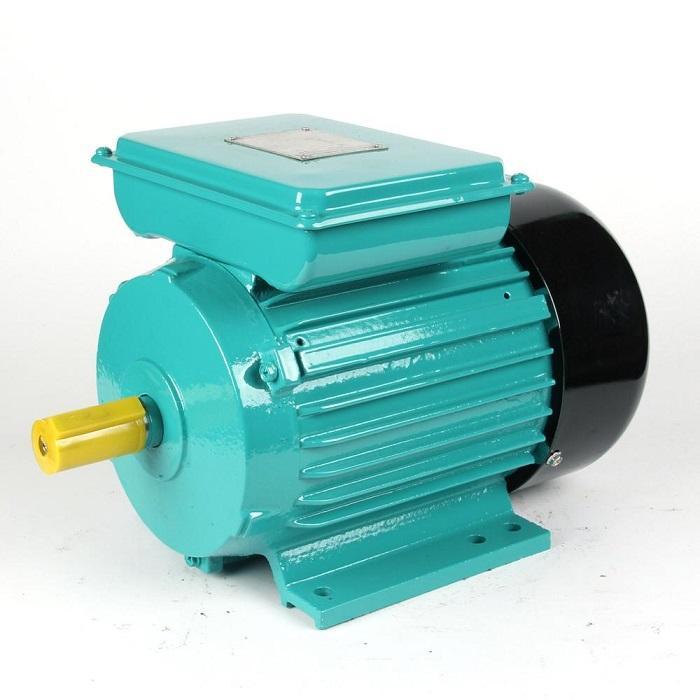One of the famous members of the huge family of AC motors is the single-phase induction motor. This type of motor is for converting electrical energy to mechanical energy to conduct some physical tasks. To do their job properly, this induction motor needs only one power phase. They are often used in low-power applications such as domestic and light-industrial use. Easy and simple construction, cheap cost of maintenance, great reliability, and low cost of repair are some of its considerable advantages.
Linquip has collected all the information required to get acquainted with this type of motor. In the following sections, we will elaborate on the construction, working principle, and types of single-phase induction motors. Stay with us.
Single-Phase Induction Motor Design
The two main components of the single-phase induction motor are the stator and rotor. As you may know and perceive from the name, the Stator is the stationary part of this motor. On the other hand, the rotor is the rotating component of the motor. the single-phase alternating supply reaches to the stator winding. Rotor with the assistance of a shaft is connected to the mechanical load. The rotor has a laminated iron core with many slots that are skewed. These rotor slots are closed or semi-closed type. The rotor windings are symmetrical.
There is an air gap between the rotor and the stator. The most common usages of this motor are in refrigerators, clocks, drills, pumps, washing machines, and more. The stator winding in the induction motors is divided into two components: the main winding and the auxiliary winding. the position of these two types of windings is in a way that the auxiliary winding is perpendicular to the main winding. In induction motors, the main winding is the winding with more turns while another one is called auxiliary winding.
Working Principle of the Single-phase Induction Motor
The previous section gave you some information about the construction and the design of the single-phase induction motors. Now that you know some parts of this kind of induction motor, let’s see what working principle rules over the operation of this construction.
As mentioned before, a single-phase AC supply is given to the stator winding. After the stator winding receives the power supply, a magnetic field is produced which strikes in a sinusoidal manner. After a while, the polarity of the magnetic field reverses and the alternating flux cannot provide the required rotation force to the motor. As you may know, for the working of any electrical motor we need two fluxes.
The interaction of these two fluxes produced the required torque. With the application of a single-phase AC supply to the stator winding, the alternating current starts moving through the stator. This alternating current produces an alternating flux and it is called main flux. the main flux also links with the rotor conductors.
According to Faraday’s law of electromagnetic induction, EMF gets induced in the rotor. As the rotor circuit is closed one so, the current starts moving in the rotor. This current called the rotor current produces its flux called rotor flux. Since this flux is produced due to the induction principle so, the motor working on this principle got its name as an induction motor.
Read More on Linquip
- Single phase generators; 5 essential steps to know single phase generators
- What Is Split Phase Induction Motors? 2021Ultimate Guide
- What Are Shaded Pole Induction Motors? 2021 Ultimate Guide
- Types of Induction Motor: A Concise and Useful Guild
- The Only Guide You’ll Ever Need For The Working Principle of Induction Motor
Types of Single-Phase Induction Motor
In the previous section, you read about the conditions and principle that a single-phase induction motor works depending on them. Now it is time to know more about the different types of single-phase induction motor. Based on the different methods for starting the single-phase IM, there are four main different types that we are going to deliver some useful information about each of them in the following sections.
Split Phase Induction Motor
This type of single-phase IM is Also known as resistance start motor. In this type, you will find the main winding and the auxiliary winding displaced by 90 degrees. The auxiliary winding and a centrifugal switch are connected in series. This switch’s job is to cut off the auxiliary winding from the main circuit when the motor speed reaches the speed up to 75 to 80 percent of the synchronous speed.
Some characteristics of a split-phase induction motor include a power rating from 60 to 250W, constant speed, and high starting current. Because of the low cost of motor maintenance and repair, it is very popular in the market. Some domestic applications make use of this motor effectively. Remember that due to its low starting torque, it cannot drive more than 1kW.
Capacitor Start Motor
In this kind of single-phase IM, the auxiliary winding has more turns. and an electrolytic capacitor is put in serially with the auxiliary winding. Like the previous type, A centrifugal switch is also connected and the two windings are placed 90 degrees. Some characteristics of the capacitor start motor are that the cost of maintenance and repair is high and the power rating is from 120 to 7 kW. Capacitor start motors are commonly used in applications where high starting torque is needed.
Capacitor Start and Capacitor Run Motor
The working principle and construction of the capacitor start and capacitor run the motor and the capacitor start motor are almost the same. The two main components of this motor are the cage rotor and the stator windings. The stator windings are placed at 90 degrees. This type of induction motor uses two capacitors in parallel. Here you can find a centrifugal switch too. Starting large loads, simple operation and construction, and great efficiency are some of the characteristics of the capacitor start and capacitor run the motor. Both domestic and industrial applications benefit from this motor.
Shaded pole motor
The shaded pole motor consists of a cage rotor and a stator. The stator itself consists of salient poles with an exciting coil. Each pole is wrapped inside a shading coil. It is why the poles are called shaded pole and the motor is called the shaded pole motor. Simple construction and design, no centrifugal switch, and a power rating of 30W are some characteristics of this type of induction motor. Due to its Low power rate, low power requiring applications make use of this motor commonly.
Conclusion
In this article, we tried to deliver some useful information about single-phase induction motors. First of all, we talked about the overall construction and design of this type of AC motor. Then we moved to the working principle and at last, we reached the different types of single-phase IM. We will be very happy if you have any opinions or experiences of using this kind of induction motors and want to share it with us in the comments. Moreover, if you have any questions, sign up on our website and let our experts in Linquip help you out. Hope you enjoyed reading this article.
Buy Equipment or Ask for a Service
By using Linquip RFQ Service, you can expect to receive quotations from various suppliers across multiple industries and regions.
Click Here to Request a Quotation From Suppliers and Service Providers






If the capacitor wires are exposed to heat and water, it’s insulator will be damaged exposing the wire conductor.
Thanks for sharing your experience with us, Regnier! You can also visit our industrial directories, where you can find thousands of various industrial equipment based on your application and demand.